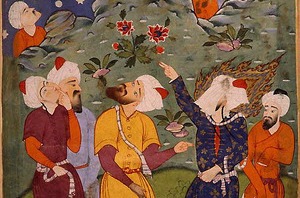How can we consciously realize the consciousness concept?
First, consciousness is beyond concepts – language, which is dualist, allows talking of it as if separate from the subject, thus conceptually. But consciousness is a prime reality, the foundation of everything existing; same as being (which are not two). Consciousness is first, an immediate reality and, accordingly, you don’t have to do anything to realize it since you are it. Only, let the veil of ignorance drop, mostly by ‘not this, not this’ – one apavada after another; that is, by real understanding or discrimination. You are being itself, consciousness itself. The knower cannot know itself – as an object.
Who would win in an argument between Ramanujacharya and Shankaracharya?
As non-duality can be said to go beyond, and at the same time enclose duality within itself, we can also say that Shankara, being a non-dualist philosopher, goes beyond and ‘incorporates’ Ramanuja, that is, the latter’s philosophy (it has been said: a jñani understands a bhakta, not vice versa).
Ramanuja took the ego (psychological self) as being the Self, an error for an Advaitin. For the former a destruction of the ego (“me”) will thus entail destruction of the Self. For an Advaitin, the ego or subtle body (mind, senses and vital breath) dissolves when the body dies – not so awareness or pure consciousness.
From the viewpoint of Advaita Vedanta ‘consciousness’ is another name for ‘reality/being/existence’: all there is or that can be (all possibilities of existence). Neither ‘subject’ nor ‘object’, it annihilates this (mental) division, as well as sublating all concepts.
Or, as Francis Lucille, a well-known teacher wrote: ‘Simply put, non-dualism is the hypothesis that reality is non-dual, that there is only one single reality which is the substance of all things, of all phenomena, of both mind and matter. If that is true, it follows that the reality of our ordinary consciousness, meaning whatever it is that is really perceiving these words in this moment, must be this non-dual, single, and universal reality.’
Shankara said:
‘An enlightened person, after his death, does not undergo a change of condition – something different than when he was living. But he is said to be “merged in Brahman” just due to his not being connected to another body.’ Quoted from ‘The Method of Early Advaita Vedanta’, Michael Comans.

 Three Q/A from QUORA (on brain, philosophy, QM, NDE, consciousness)
Three Q/A from QUORA (on brain, philosophy, QM, NDE, consciousness)